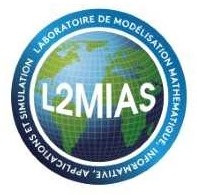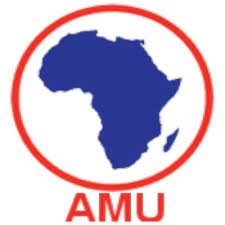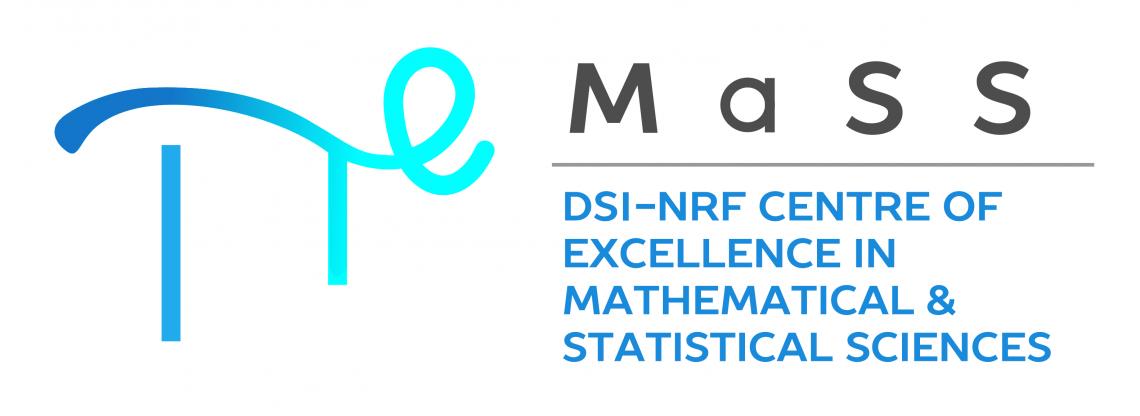3MC Presents:
International Conference on Mathematical Modeling in Biology and Life Sciences
28 February-1 March 2024, NWU, Potchefstroom
Partners
Sponsors
Disclaimer: Opinions expressed and conclusions arrived at are those of the author and are not necessarily to be attributed to the CoE-MaSS.
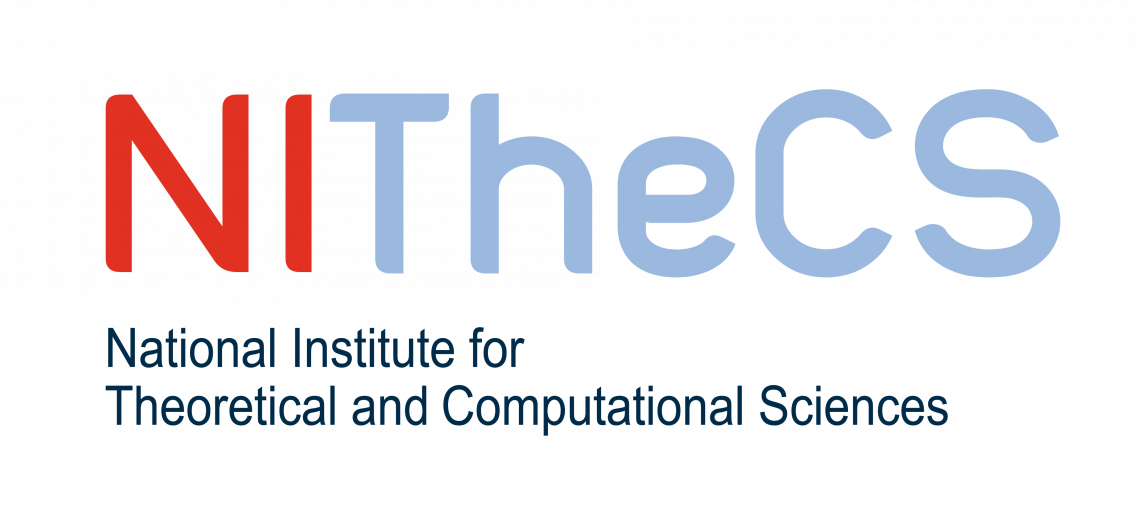
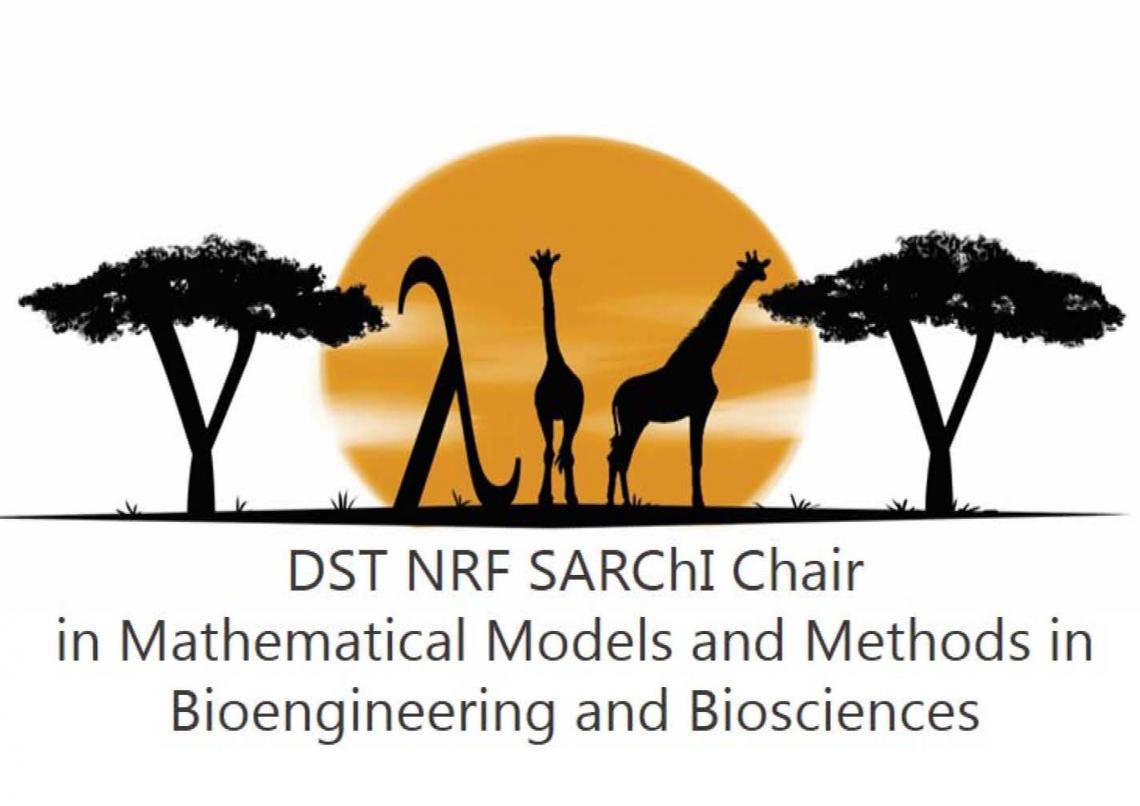
Titles and abstracts of plenary talks
Prof Folashade Agusto
Title: Prescribed fire: Exploring the effect of fire on tick-borne diseases
Abstract: In recent times tick ranges have been expanding due in part to rising temperatures as a consequence of climate change, thereby increasing the risks and prevalence of tick-borne illnesses across the country. Thus, it is vital to find practical ways of managing tick populations. Prescribed fires are a common form of land management practices; it is time and cost-efficient when applied across large amounts of land. In this seminar, I investigate the effects of prescribed fire intensity and the duration between burns on the prevalence of tick-borne illnesses as temperature rises. Using stage-structured tick-host models with impulsive differential equations our results indicate that prescribed fire intensity has a larger impact in reducing disease prevalence than frequency between burns. Exploring the use of prescribed burns in preventing the establishment of ticks into new areas shows that fewer burns are ineffective at preventing their establishment because ticks can recover relatively quickly following a burn, but frequent, long-term prescribed burns can slow and possibly prevent their establishment.
Prof Julien Arino
Title: Modelling a multiple pathogen / multiple species system
Abstract: In the context of the ongoing climate change crisis, the range of aquatic species is changing much faster than it used to. This has implications in terms of pathogen propagation, since species that used to interact infrequently now come into contact more frequently. This has the potential of introducing pathogens into ecosystems from which they were absent to that point. The work presented here is motivated by the situation in the Western Canadian Arctic and the Mackenzie River system, where some resident species are increasingly collocated with vagrant salmon species who spend much of their time in distant ecosystems. A simple ODE model is formulated for the transmission of multiple pathogens between multiple species. The corresponding continuous time Markov chain and its multitype branching process approximation are then studied in order to characterise the probability that a pathogen becomes establishes in a species from which it was absent. Computational analysis of some simple cases are also presented.
Prof Jacek Banasiak
Title: Direct Lyapunov method - known and less known
Abstract: Lyapunov functions are workhorses of the stability theory of dynamical systems. However, mainly, only a small number of possibilities offered by the theory is used. In this, mostly survey, talk, we will describe its less-known aspects, such as nondifferentiable Lyapunov functions or inverse Lyapunov theorems, and their applications in mathematical biology.
Prof Sandrine Etienne-Manneville and Prof Stephanie Portet
Title: Intracellular dynamics and transport of cytoplasmic intermediate filaments
Abstract: Intermediate filaments are one of the components of the cytoskeleton. These long elastic homo- or hetero-polymers spread throughout the cytoplasm to form a scaffolding network, which plays a key role in the control of cell mechanics, cell morphology and cell and tissue integrity. The organization of the intermediate filament networks is the major determinant of their functions in cells and tightly regulated by a combination of intracellular processes. The dynamic spatio-temporal regulation of the network results from the interplay between assembly/disassembly of filaments, filament bundling and different types of intracellular transport. An overview of biological processes involved in the intermediate filament organization and dynamic rearrangements will be presented as well as experimental techniques, mathematical models and their combination used to investigate important mechanisms related to this problem.
Prof Inger Fabris-Rotelli
Title: Advances in Spatial Linear Networks
Abstract: This talk will cover the use of linear networks in Spatial Statistics. A variety of methods will be discussed involving analysis in a linear network space. Applications in informal roads, criminology and disease mapping will be presented.
Prof Jean Lubuma
Title: Nonstandard finite difference models of the Ebola virus disease and related optimal control problems
Abstract: Ebola Virus Disease (EVD) outbreaks in Sub Saharan Africa often come with unprecedented challenges. For instance, for the 2014-2016 West Africa EVD, the largest and severest outbreak with a total of 28,616 cases and 11,310 deaths, one of the serious challenges was that the outbreak simultaneously arose in three different countries (viz. Guinea, Liberia and Sierra Leone) to and from which migrations and travel of people by road and air were considerable, despite the implementation the exit screening measure at the borders, as recommended by the World Health Organization. In this talk, we construct a metapopulation model to study the transmission dynamics as well as the control and management of the disease. In each patch, we consider an extended Susceptible-Exposed-Infective-Recovered (SEIR) type-model enriched by three more compartments that account for disease induced deceased, isolated and quarantined individuals. Our focus is three-fold. Firstly, we investigate the stability of the disease-free equilibrium and boundary equilibria in terms of various threshold parameters such as the control reproduction number. Secondly, we design nonstandard finite difference (NSFD) schemes that replicate the feature of the continuous model. Thirdly, we take the work at another level. That is to consider two optimal control problems. The first problem is defined through the exit-entry screening of travellers, while the second one combines the exit screening with the vaccination intervention. The well-posedness of both problems is proved by Pontryagin’s maximum principle. For each optimal control problem, we construct a new Forward-Backward-Sweep-Method (FBSM) in which the state variable system is approximated by a NSFD scheme, which is dynamically consistent with respect to the continuous model. Numerical simulations, based on real data from the three most affected countries mentioned above, are provided to support the theory. They confirm the superiority of the NSFD schemes over the standard ones. In particular, a new fact is observed: the classical Euler-based scheme annihilates the impact of the optimal control on infection numbers, while the nonstandard Euler-based scheme faithfully replicates it.
Prof Rachid Ouifki
Title: From the estrogen paradox to the guardian of the genome. Insights from mathematical modelling into breast cancer treatment
Abstract: Estrogen plays a dual role in breast cancer, stimulating its growth while also being effective in its treatment. This is referred to as “the estrogen paradox”. Therapies centered around estrogen have shown efficacy in reducing the risk of cancer recurrence. Moreover, the p53 protein, termed "the guardian of the genome", plays a pivotal role in preventing breast cancer by regulating genes involved in DNA repair, cell cycle arrest, and inducing apoptosis when DNA damage is too severe. However, when administered as standalone interventions, both therapies exhibit limited success in treating breast cancer. Therefore, it is imperative to explore their potential when combined.
Given the complex interplay between estrogen and the protein p53, we will present an overview of these two treatment modalities, considering their individual limitations and strengths. We will also use mathematical modelling to explore the interaction dynamics between these two factors, and their link to the estrogen papadox. Additionally, we will use optimal control theory to investigate potential avenues for optimizing breast cancer treatment combination strategies.
Prof Nikolaos Sfakianakis
Title: The filament based lamellipodium model: where the mathematical cell motility begins
Abstract: The lamellipodium is a thin, sheet-like structure that is found in the propagating front of fast moving cells like fibroblasts, keratocytes, cancer cells, and more. It is a dense network of linear biopolymers of the protein actin, termed actin-filaments. These actin-filaments are highly dynamic structures that participate in a plethora of processes such as polymerization, nucleation, capping, fragmentation, and more.
These processes are important for the structure and functionality of the lamellipodium and the motility of the cell. They are, to a large extent, affected by the extracellular environment; for example, the chemical landscape in which the cell of resides and the local composition and architecture of the Extracellular Matrix (ECM), lead to biased motility responses of the cell. When in proximity to each other, they develop cell-cell adhesion via specialized transmembrane proteins of the cadherin family. Collectively, they coagulate to clusters of cells that eventually merge to form cell monolayers.
We model these phenomena using the Filament Based Lamellipodium Model (FBLM); an anisotropic, two-phase, two-dimensional, continuum model that describes the dynamics the lamellipodium at the level of actin-filaments and their interactions. The model distinguishes between two families (phases) of filaments and includes the interactions between them, as well as between the network of the filaments and the extracellular environment. The FBLM was first proposed in [1] and later extended in [2,4,5]. The FBLM is endowed with a problem specific Finite Element Method (FEM) that we have previously developed in [3].
In this talk we present the basic components of the FBLM and the FEM and focus on a series of simulations reproducing fundamental components of the motility of the cells, such us chemotaxis, haptotaxis, interaction with the environment [3,4]. We also present our new findings with respect to cell-cell collision and adhesion, as well as the formation of clusters of cells and cell monolayers [5]. To confront the increased computational needs of the monolayer, we have developed a parallel version of our numerical method which we also address in this talk.
References
[1] D. Oelz, C. Schmeiser. How do cells move? in Cell mechanics: from single scale-based models to multiscale modeling, (2010)
[2] A. Manhart, D. Oelz, C. Schmeiser, N. Sfakianakis, An extended Filament Based Lamellipodium: Model produces various moving cell shapes in the presence of chemotactic signals, (2015)
[3] A. Manhart, D. Oelz, C. Schmeiser, N. Sfakianakis. Numerical treatment of the filament based lamellipodium model (FBLM) (2016)
[4] N. Sfakianakis, A. Brunk, Stability, convergence, and sensitivity analysis of the FBLM and the corresponding FEM, (2018)
[5] N. Sfakianakis, D. Peurichard, C. Schmeiser, and A. Brunk, The FBLM-FEM: from cell-cell adhesion to cluster formation, (2018)
Prof James Watmough
Title: Infections, invasions, immunity, and multiple stable states
Abstract:
Many theoretical problems in ecology, epidemiology and immunology can be cast as characterizing and quantifying the response of an ecosystem to a disturbance. Depending on the size and nature of the disturbance, the system may return quickly to equilibrium, or transition between multiple equilibria, or embark on wild and exciting transient dynamics.
As a consequence, the objective of an intervention and control measures is not necessarily to eradicate the pathogen, but to determine the time and duration of intervention required to shift the dynamics into the basin of attraction of the desired state. In this seminar we'll explore some of the consequences of multiple steady states and interesting transient solutions in simple epidemiological, ecological and immunological systems.


